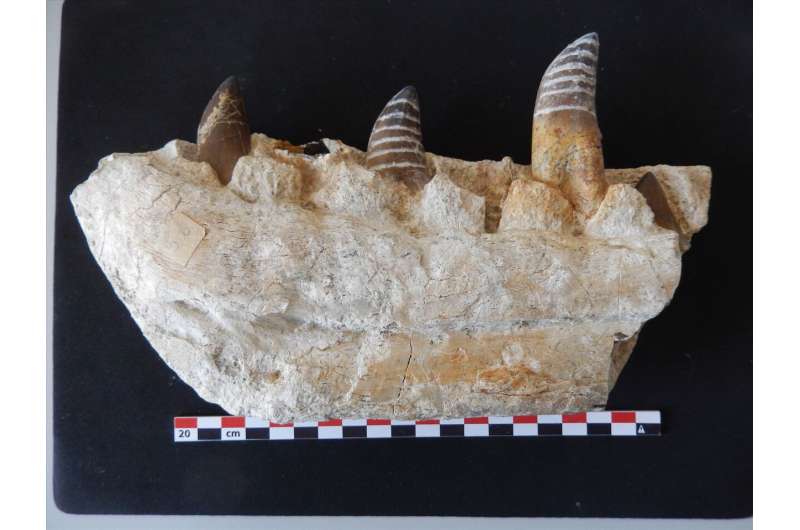Tooth enamel analyses offer insights into the diet and habitat of T. rex relative tarbosaurus

Together with an international team, Senckenberg scientist Hervé Bocherens studied the fossilized teeth of the carnivorous dinosaur Tarbosaurus bataar. Based on stable isotopes, the researchers were able to draw inferences regarding the habitat and feeding habits of this relative of T. rex, who lived around 70 million years ago. According to the results, the carnivores were not very picky in their prey selection. The study is published recently in the scientific journal Palaeogeography, Palaeoclimatology, Palaeoecology.
The Gobi Desert in southern Mongolia is a well-known discovery site of fossil dinosaurs. "These fossils from the Cretaceous also include Tarbosaurus bataar, a representative of the Tyrannosaurids and relative of the famous Tyrannosaurus rex," explains Prof. Dr. Hervé Bocherens of the Senckenberg Centre for Human Evolution and Palaeoenvironment at the University of Tübingen.
Bocherens and his team of scientists examined the fossilized teeth of this up to twelve-meter-long dinosaur, using oxygen and carbon isotopes in the tooth enamel to draw inferences regarding the dinosaurs' feeding habits and the environmental conditions at the time.
"It is amazing how much information is revealed by this approximately 70-million-year-old tooth enamel," explains a delighted Bocherens, and he continues, "Our analyses show that the environment of these carnivorous reptiles was about 10 degrees Centigrade warmer than today and the amount of precipitation was subject to strong seasonal fluctuations. We assume that the dinosaurs inhabited closed forests—in a climate characterized by monsoons with cold, dry winters and hot, rainy summers."
In addition, the researchers were able to reconstruct the Tarbosaurs' diet based on the teeth from five differently aged individuals. According to the results, the carnivores were not very picky in their prey selection: their menu included both the Hadrosauridae, commonly known as "duck-billed dinosaurs," as well as different species of vegetarian sauropods. "Our isotope studies therefore confirm the fossil discoveries and show that Tarbosaurus took up a position at the top of the food pyramid," adds Bocherens in summary.
More information: Krzysztof Owocki et al. Diet preferences and climate inferred from oxygen and carbon isotopes of tooth enamel of Tarbosaurus bataar (Nemegt Formation, Upper Cretaceous, Mongolia), Palaeogeography, Palaeoclimatology, Palaeoecology (2019). DOI: 10.1016/j.palaeo.2019.05.012
Journal information: Palaeogeography, Palaeoclimatology, Palaeoecology




















